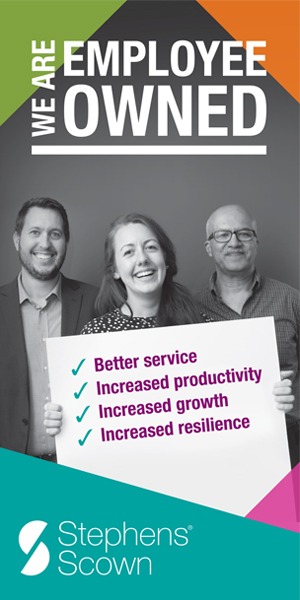
Portfolio Landlord Strategies: How to Scale Your Rental Business
1. Introduction: The evolution from landlord to property entrepreneur
Owning a single buy-to-let is a milestone. But owning five, ten, or fifty units signals a shift from being a passive investor to a property entrepreneur. Scaling a rental business from one to many isn’t simply about buying more—it’s about strategy, structure, and foresight. For portfolio landlords, the path to sustainable growth is paved with sharp decisions, informed risks, and operational discipline.
2. Understanding the mindset of a portfolio landlord
Scaling a rental business demands a different mentality than owning one or two properties. A portfolio landlord treats property like a business, not just a passive investment. This means thinking in terms of cash flow, cost centres, growth trajectories, and long-term yield.
It also involves embracing systems over spontaneity. While a casual landlord might self-manage or overlook inefficiencies, a portfolio landlord understands that time is capital, and every decision should be optimised for growth.
3. Setting scalable foundations from the start
Growth without structure is chaos. That’s why a scalable foundation is essential early on. This includes:
- Clear business goals – Are you aiming for capital appreciation, passive income, or a blend?
- Robust bookkeeping – Accurate records are vital for financial planning and tax reporting.
- Tech stack readiness – Use property management software, digital tenancy agreements, and cloud accounting to automate where possible.
Scalability is about being proactive, not reactive.
4. Choosing the right property types for growth
Not all properties are created equal—especially when it comes to scaling. A studio flat in a city centre might provide fast turnover, but HMOs (Houses in Multiple Occupation) can yield higher returns per unit. Conversely, family homes may offer more stable tenants but slower cash flow velocity.
Understanding your target tenant demographic is essential. Professional tenants, students, families, or retirees all carry different risk profiles and expectations.
Estate agents in Catford, for instance, often report a strong appetite for three-bedroom homes among commuter families, offering a sweet spot of yield and stability in South London.
5. Diversification vs. specialisation: Which path suits your goals?
Portfolio landlords face a strategic choice: focus on one type of asset—or diversify across several. Specialising can streamline operations and deepen market knowledge, especially in niche sectors like student housing or short-term lets.
Diversification, meanwhile, offers a hedge against market volatility. Owning properties in different locations or sectors can balance out fluctuations and protect your income stream.
The right approach depends on risk appetite, experience, and local market dynamics.
6. Financing multiple properties: Leveraging equity and alternative funding
Cash is king—but leverage is queen. To scale efficiently, most landlords use a mix of financing methods:
- Equity release – Re-mortgaging existing assets to fund new purchases
- Portfolio mortgages – A single facility across several properties
- Private finance – Partnering with investors or using joint ventures
- Limited company lending – Optimised for landlords building corporate portfolios
Working with brokers familiar with portfolio lending is crucial, as mainstream lenders often have caps or rigid criteria that hinder scaling.
7. Building a strong management system for multiple units
Managing ten properties manually is a logistical nightmare. As your portfolio grows, you need infrastructure:
- Property management software – To track rent, maintenance, compliance, and communication
- Virtual assistants or admin support – For tenant onboarding, renewals, and documentation
- Outsourced property managers – Ideal for geographically dispersed portfolios
Efficiency is the name of the game. A well-managed portfolio maximises returns and minimises stress.
8. Legal and regulatory considerations when scaling
With every new property, compliance becomes exponentially more complex. Gas safety certificates, EPC ratings, electrical checks, and HMO licensing must be meticulously tracked.
Moreover, legislation shifts frequently. The Renters (Reform) Bill, changing eviction rules, and regional licensing schemes add layers of complexity.
Engaging a legal advisor or compliance consultant is not an extravagance—it's a safeguard against costly oversights.
9. Using data and analytics to inform expansion decisions
Gut instinct has its place, but data is your most valuable asset. Portfolio landlords should analyse:
- Rental yield trends
- Tenant demand per postcode
- Void period averages
- Capital growth forecasts
Platforms like Rightmove Plus, ZooplaPro, and LandInsight provide granular insights, while estate agents in Catford often supply hyper-local data that can’t be replicated online for more information to visit now.
Strategic scaling relies on evidence, not emotion.
10. Building relationships with local estate agents and contractors
In property, your network is your net worth. Establishing rapport with local agents can unlock off-market deals and early listings. Letting agents can flag upcoming vacancies or tenants seeking upgrades.
Equally important are reliable contractors—electricians, plumbers, decorators—who can handle maintenance and refurbishments quickly and to high standards.
Relationships save time, reduce costs, and mitigate risk.
11. Tax efficiency and structuring your portfolio smartly
As your rental business grows, so does your tax liability. Structuring your portfolio correctly can yield significant savings:
- Limited company ownership – Potentially more tax-efficient for higher-rate taxpayers
- Holding companies – To manage multiple SPVs (Special Purpose Vehicles)
- Pension contributions – Using rental profits to boost retirement savings
- Capital allowances – Especially relevant for furnished holiday lets and commercial-to-resi conversions
Consulting a property accountant early can prevent expensive restructuring later.
12. Minimising voids and maximising tenant retention
Vacant properties drain resources. High tenant turnover also incurs costs—marketing, cleaning, referencing, and time. The goal is to foster long-term tenancies with quality occupants.
Strategies include:
- Responsive maintenance – Tenants are more likely to renew when issues are addressed quickly
- Clear communication – Establishing expectations and being approachable
- Incentivised renewals – Offering minor upgrades or frozen rents to loyal tenants
Consistency and care translate into loyalty—and profitability.
13. Common pitfalls to avoid when expanding rapidly
Growth can breed vulnerability if not managed wisely. Avoid these traps:
- Overleveraging – Borrowing aggressively can leave you exposed in downturns
- Neglecting due diligence – Rushing into poor-quality assets for the sake of volume
- Underestimating management – More properties = more tenants, more issues
- Failing to plan exits – Not every asset should be held indefinitely
Scaling requires both momentum and moderation.
14. Final thoughts: Strategic patience and sustainable scaling
Becoming a successful portfolio landlord is not about accumulating doors—it’s about building a resilient, cash-flowing business that stands the test of time. With a combination of sound financial planning, operational structure, and a long-term vision, you can scale with confidence.
Smart growth doesn’t chase the next shiny investment—it plans meticulously, adapts intelligently, and invests in strong foundations. In today’s evolving rental market, those who scale sustainably will outlast those who scale recklessly.













